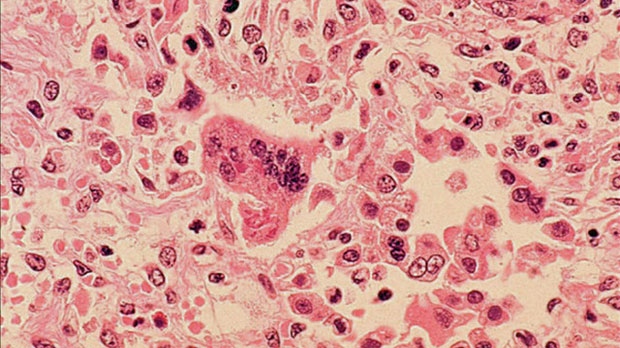Some neurological disorders can be improved through photobiomodulation, a non-invasive technique based on the application of low-intensity light to stimulate altered functions in specific regions of the body. Now, a study published in the Journal of Affective Disorders reveals how photobiomodulation applied to the brain-gut axis is effective in recovering some cognitive alterations and sequelae caused by chronic stress. The study opens up new perspectives for applying the technique in future therapies for the treatment of neurological diseases in patients.
The article, based on the study of laboratory animal models, is led by Professor Albert Giralt, from the Faculty of Medicine and Health Sciences and the Institute of Neurosciences (UBneuro) of the University of Barcelona. Teams from the UB’s Centre for the Production and Validation of Advanced Therapies (CREATIO) and the University of Girona, as well as from the University of Montpellier and the company REGEnLIFE (France) are also participating.
Low-intensity light for activating the gut-brain axis
In clinical practice, photobiomodulation applies light from lasers or other low-intensity sources to stimulate the activity of an organ with an altered physiology. Now, the new study applies, for the first time in the field of depression, the use of combined photobiomodulation to stimulate different organs, specifically the brain and the gut.
“This is one of the most innovative scientific contributions of the study: to co-stimulate in a coordinated way the brain and the gut at the same time, i.e. the gut-brain axis. Today, the area of research into the gut-brain axis is generating great scientific interest and is a very promising field for the possible treatment of diseases of the nervous system,” says Professor Albert Giralt, member of the August Pi i Sunyer Biomedical Research Institute (IDIBAPS) and the Network Centre for Biomedical Research on Neurodegenerative Diseases (CIBERNED).
“The new therapeutic approach focuses on this now rediscovered scenario of intervention and manipulation of the gut-brain axis to address neurological and psychiatric disorders,” says Giralt. “Photobiomodulation is a non-invasive technology that is very well tolerated by patients and lacks the side effects of pharmacological treatments. In addition, this advance could also be useful in the treatment of pathologies without clear or incomplete medical coverage, such as the treatment-resistant subtype of depression,” adds the expert.
The devices for the application of photobiomodulation, developed by the company REGEnLIFE, have been adapted from previous studies related to Alzheimer’s patients. They combine multiple stimulation sources (laser, LED, etc.) associated with a magnetic ring to stabilise the emission of light in a pulsed — and not continuous — manner to avoid overheating the tissues, and are adapted for clinical application in patients.
Psychiatric disorders: beyond the brain
Another scientific objective of the study is to prove that psychiatric disorders are not only centred in the brain, “but that other tissues and organs also play a decisive role in their pathophysiology. If new therapies take all these factors into account, it is very likely that we will be able to obtain very satisfactory results in the future,” says the researcher.
But do both photobiomodulation and photobiomodulation act on the cervical-intestinal axis? To date, there have only been descriptive studies of the modifications induced by photobiomodulation. Now, the study delves into the molecular mechanisms and reveals how photobiomodulation is able to reverse the cognitive effects of chronic stress by restoring the sirta1 pathway, “related to senescence and neuronal death, the modulation of negative pyramiding and normalisation of diversity in the intestinal microbiota,” notes researcher Anna Sancho-Balcells (UB-UBneuro-CIBERNED), first author of the article.
“From other studies — she continues — it was known that the SIRT1 pathway is altered in preclinical models of stress and depression. However, the mechanisms by which photobiomodulation exerts its beneficial effects remained a mystery. In our study, we found that the SIRT1 pathway is the most altered physiological pathway in certain brain regions under chronic stress, and photobiomodulation has the capacity to restore it.”
In the digestive system, photobiomodulation would activate changes in the intestinal microbiota, effects that are superior in the case of dual brain-gut stimulation compared to treatment of the gut alone. As Professor Xavier Xifró, from the TargetsLab research group at the Faculty of Medicine of the University of Girona, explains, “the associated cellular mechanisms seem to be linked to the improvement of neuroinflammatory processes. Thus, the changes observed in the microbiota are strongly associated with some changes in neuroinflammation (for example, microgliosis and astrogliosis, which occur through the inflammation of specific cells of the nervous system).”
Combined photobiomodulation in patients with depression
Photobiomodulation could become a potential adjunctive treatment to be administered in coordination with pharmacological therapy in cases of major depressive disorders. In future research, the team would like to promote the design of clinical trials to test the efficacy of combined photobiomodulation in patients with depression.
“Photobiomodulation is likely to be particularly suitable for specific forms of depression, such as treatment-resistant depression. We also want to explore the relationship with neuroinflammatory processes: this is one of the best-rescued parameters after photobiomodulation and treatment-resistant depression is strongly associated with neuroinflammation,” concludes the research team.






